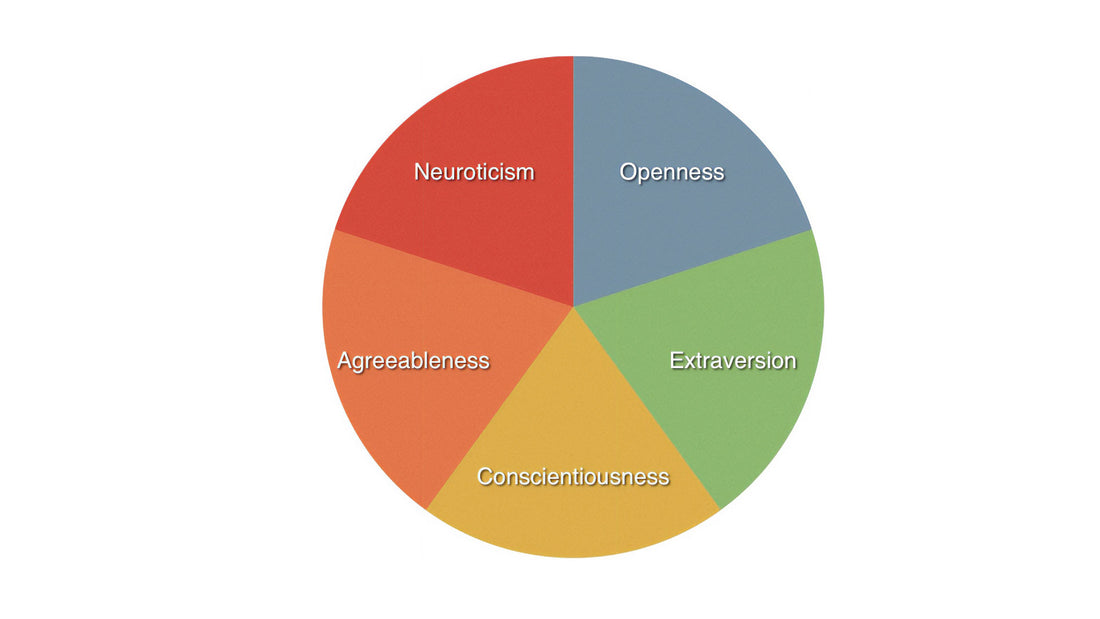The Big Five is a personality theory that provides a blueprint for understanding ourselves and others based on commonly used terminology that can effectively describe our personalities and approaches to life. The five broad categories of personality traits are referred to as “factors” and include: openness to experience, conscientiousness, extraversion, agreeableness, and neuroticism. The term “Big 5” and acronym OCEAN is often used to remember there are 5 global personality traits, of which the first letter of each creates the word “ocean.”
Each of the personality factors represents a range between two extremes and contain a number of more specific descriptors, referred to as “facets” that provide more detailed qualities related to the more global personality trait. For example, in terms of conscientiousness, a person may fall anywhere between high conscientiousness (highly thoughtful, goal-directed, and scheduled) and low conscientiousness (messy, tendency towards procrastination, and poor follow-through). Let’s briefly review each of the personality factors:
1. Openness to Experience refers to a person’s willingness and desire to try new things. A person who scores high on his factor is likely to be creative, enjoy considering abstract topics, and are motivated to take on new challenges in life. Someone low on this trait is more likely to resist new ideas and change, dislike more abstract and theoretical concepts, and are not particularly drawn to creative and imaginative pursuits. While those who are high in openness are generally inventive and curious, those low on this trait are more likely to be viewed as cautious and pragmatic.
2. Conscientiousness refers to the tendency to be organized, dependable, disciplined, and planful. Those who score high on this trait tend to be described as efficient, reliable, attentive to details, structured, and particularly aware of how their behaviors affect others. In contrast, low scores on this factor suggest more of an impulsive approach to life; they tend to dislike structure and schedules, fail to complete tasks that they start, and may be perceived as sloppy and unreliable. While those high in conscientiousness may be viewed as stubborn and obsessive, those low in conscientiousness are more likely seen as flexible and spontaneous.
3. Extraversion can be thought of in terms of a battery. People who score high on extraversion (“extraverts”) tend to charge their batteries in social situations, whereas those low on extraversion (“introverts”) often need to spend time alone or in more intimate social settings to in order to recharge. Extraverts are viewed as outgoing, energetic, talkative, assertive, and emotionally expressive and tend to enjoy being the center of attention, meeting new people, and having a large circle of friends and acquaintances. Introverts often prefer to be observers in social situations, would prefer to have in-depth, meaningful conversations rather than make small talk, and are often viewed as more reserved in social settings. Whereas extroverts run the risk of being perceived as attention-seeking and domineering, introverts may be interpreted as acting aloof, disengaged, and self-involved.
4. Agreeableness refers to the tendency to be trusting, cooperative, and compassionate. Those who score high on this trait are more likely to be altruistic, empathetic, and helpful to those around them compared to lower scorers who tend to be less interested in other people’s problems and feelings and, therefore, more likely to be competitive and manipulative. Because it reflects a person’s trusting nature, those high on this trait may be described as naïve and submissive to others, whereas those low on this trait are more likely to be viewed as suspicious, argumentative, and antagonistic.
5. Neuroticism is a commentary on how prone an individual is to psychological stress. High scores are characterized by moodiness, nervousness, and high anxiety, while low scores reflect personalities that are more relaxed, calm, and emotionally stable. Neurotic individuals tend to be more emotionally reactive, that is, they experience more dramatic shifts in mood and have a harder time bouncing back from stressful events; they may be viewed as passionate, dynamic, sensitive, and engaging, but may also come across as unstable and insecure. In contrast, individuals who score low on neuroticism tend to handle stress well. While they do not worry as often and have an easier time responding to, and recovering from, difficult emotional experiences such as anger, vulnerability, anxiety, and sadness, they are sometimes perceived as apathetic and uninspired.
Now that you have been introduced to the Big 5 personality traits, consider for a moment where you might fall on the spectrum from low to high on each trait. Are you below average, average, or above average in terms of how the trait applies to you compared to others who are approximately your age and gender? What about the people close to you? How do they rank on the Big 5 traits?
Are you curious about what your (or someone else’s) actual results might look like? Click this link to find 2 versions of a test that measure the Big 5 factors. The shorter version may be completed in a few minutes, but has limited data compared to the longer version, which has 300 questions, but will provide a more in-depth set of results. If you’re interested in how the Big 5 traits affect the ways in which we decorate, organize our space, and make other decisions, check out Snoop: What Your Stuff Says About You by Sam Gosling. You might be surprised to find out what household and office-related items and their placement say about the people who own and display them!
